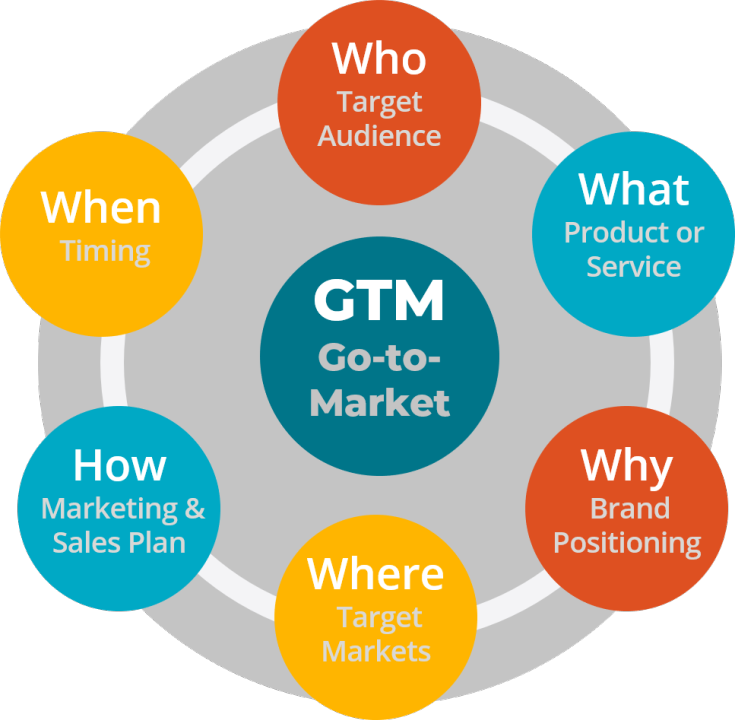- All Plans
- Yahoo Press Release
- Bloomberg Press Release + Yahoo Finance
- Business Insider Press Release
- Benzinga Press Release
- Digital Journal Press Release
- US Times Now Press Release
- AP News Press Release
- Yahoo Finance Press Release
- Street Insider Press Release
- MSN News Press Release
- USA Today Press Release
Aventi Group Unveils Comprehensive Guide to Mastering Your GTM Strategy for Product Marketing Companies

United States, 23rd Aug 2024 – In today’s competitive marketplace, a well-executed Go-To-Market (GTM) strategy is crucial for the success of product marketing companies. This guide provides a comprehensive overview of how to craft and implement an effective GTM strategy to ensure your product’s success and drive business growth.

Understanding the GTM Strategy
A Go-To-Market strategy is a detailed plan that outlines how a company will introduce and sell a product to the market. It involves identifying target audiences, determining the best channels for reaching them, and establishing a plan for capturing market share.
Key Components of a GTM Strategy
- Market Research: Analyze market trends, customer needs, and competitive landscape.
- Target Audience: Define the ideal customer profile and segment the market.
- Value Proposition: Develop a compelling value proposition that differentiates your product.
- Positioning: Determine how your product will be positioned in the market relative to competitors.
- Pricing Strategy: Set pricing based on value, competition, and market demand.
- Sales and Distribution Channels: Identify the most effective channels to reach your target audience.
- Marketing Plan: Create a marketing plan that outlines promotional tactics and communication strategies.
- Metrics and KPIs: Establish key performance indicators to measure the success of your GTM strategy.
Steps to Develop an Effective GTM Strategy
- Conduct Market Research
- Gather data on market size, growth potential, and trends.
- Identify customer pain points and preferences.
- Analyze competitor offerings and strategies.
- Define Your Target Audience
- Segment the market based on demographics, behavior, and needs.
- Create detailed buyer personas representing your ideal customers.
- Prioritize segments that align with your product’s strengths.
- Craft Your Value Proposition
- Highlight the unique benefits and features of your product.
- Explain how your product solves specific problems for the target audience.
- Ensure your value proposition resonates with customer needs and preferences.
- Position Your Product
- Determine your product’s unique selling points (USPs).
- Compare your product with competitors to identify areas of differentiation.
- Develop messaging that clearly communicates your product’s value.
- Develop a Pricing Strategy
- Choose a pricing model that aligns with your product’s value and market conditions.
- Consider cost-plus pricing, value-based pricing, or competitive pricing.
- Test different pricing strategies to determine what works best.
- Identify Sales and Distribution Channels
- Evaluate various sales channels such as direct sales, online platforms, or retail partnerships.
- Choose channels that provide the best access to your target audience.
- Develop relationships with distributors or partners to expand market reach.
- Create a Marketing Plan
- Outline marketing tactics including content marketing, social media, email campaigns, and advertising.
- Set clear objectives for each marketing activity.
- Allocate budget and resources to each tactic based on its potential impact.
- Establish Metrics and KPIs
- Define key performance indicators such as customer acquisition cost, conversion rate, and revenue growth.
- Monitor these metrics regularly to assess the effectiveness of your GTM strategy.
- Adjust your strategy based on performance data and market feedback.
Best Practices for GTM Success
- Align Cross-Functional Teams: Ensure collaboration between marketing, sales, product development, and customer support teams to create a unified GTM approach.
- Stay Agile: Be prepared to adapt your GTM strategy based on market changes, customer feedback, and performance metrics.
- Leverage Data: Use data-driven insights to inform decisions and optimize your strategy.
- Invest in Training: Equip your sales and marketing teams with the knowledge and tools they need to execute the GTM strategy effectively.
- Foster Customer Relationships: Focus on building long-term relationships with customers through excellent service and support.
Common Challenges and How to Overcome Them
- Lack of Market Understanding: Invest time and resources in thorough market research to gain a deep understanding of your target audience and competitors.
- Ineffective Messaging: Continuously test and refine your messaging to ensure it resonates with your audience and clearly communicates your product’s value.
- Inadequate Resources: Allocate sufficient budget and resources to each aspect of your GTM strategy to ensure successful execution.
- Poor Alignment: Foster collaboration and communication between different departments to ensure everyone is aligned with the GTM strategy and objectives.
Conclusion
Mastering your Go-To-Market strategy is essential for driving success in product marketing. By following the steps outlined in this guide and adhering to best practices, you can develop a GTM strategy that effectively introduces your product to the market, captures customer interest, and drives growth. Regularly assess and refine your strategy based on market feedback and performance metrics to stay competitive and achieve long-term success.
Media Contact
Organization: Aventi Group
Contact Person: Sridhar Ramanathan
Website: http://aventigroup.com/
Email: Send Email
Country: United States
Release Id: 23082416065
